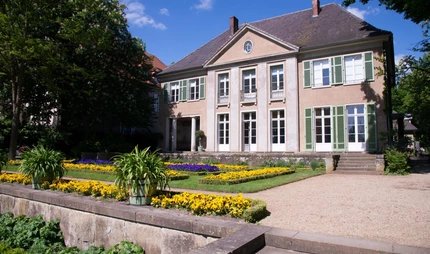
Villa von der Heydt
A hidden jewel with a turbulent history
An idyllically located Neo-Renaissance building by the Landwehrkanal – the Villa von der Heydt, whose past is anything but idyllic.
The man who built it could never have dreamt that one day his house would be used for eating shark fin soup, for illegal gambling or for making sweets. The inconspicuous villa on Reichpietschufer has an interesting and varied story to tell.
The history of the villa
One of the last remaining villas in the Tiergarten was built between 1860 and 1862 as a private residence for Baron August von der Heydt. The Neo-Renaissance building was also designed for representative purposes, with the gardens designed by the famous landscaper Peter Joseph Lenné. Later a minister under Bismarck, von der Heydt lived in his idyllically located villa until his death in 1874.
Von der Heydt’s son Eduard rented the villa to China’s first envoy to the German Empire. Once Liu Xihong moved in, opium and tobacco smoke soon rose from the villa by the Landwehrkanal. He turned the villa into a guest house, serving exotic dishes and delicacies such as dried duck, ham and shark fins.
In 1890 the property returned to the von der Heydt family. August’s great-nephew Karl was a banker and art collector. He threw wild parties and established the house as a salon for Berlin’s high society. Many poets, including Rainer Maria Rilke, were frequent visitors. After the First World War, the villa was bought by the “Allgemeiner deutscher Sportverein e.V.” (German Sports Club). The name was misleading, however, because it was really an exclusive club for illegal card games such as poker and baccarat. A raid in 1933 put a stop to the illicit shenanigans.
Destroyed and rebuilt
After the bombing of the Second World War, all that was left of the house was its basement, which was used for a time as an illegal schnapps still. Later, chocolates and sweets were made there. In 1966 the Villa von der Heydt was declared a historic building and its recovery from the troubles of the previous decades could begin. In 1971, planning began on rebuilding the upper floors and renovating the basement vaults, and the villa was restored between 1976 and 1980. Since then, it has been the official seat of the President of the Prussian Cultural Heritage Foundation.
The villa is situated in the Calandrelli complex in the shade of tall old trees – the best place to view it is over a leisurely coffee in the cafeteria of the neighbouring Bauhaus archive.



